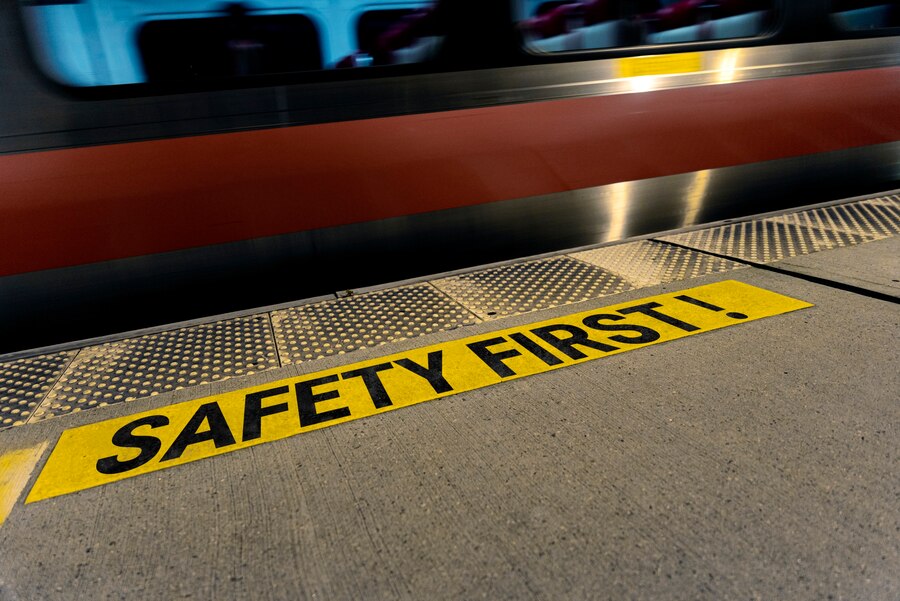Strategies To Prevent Work Injuries
5 Mins Read
Published on: 10 April 2024
Last Updated on: 09 September 2024

toc impalement
Workplace safety is a top priority for both employees and employers.
It ensures a safe and secure workplace, prevents workers from falling into the trap of potential harm, and contributes to increased productivity and morale.
However, implementing an effective strategy to prevent work injuries is important for the safety and success of any organization.
Prioritize Safety Training

One of the fundamental steps to evade workplace injuries is to provide comprehensive training on safety while working with employees.
Training sessions should cover various aspects, which include the importance of equipment, tools, and safety gear. Moreover, these sessions also contain adequate lifting techniques, emergency procedures, and pinpointing hazards.
The employees are well-trained in their respective safety protocols. With it, organizations can reduce the risk of workplace accidents to quite an extent. Workplace injury prevention must be one of the organization’s top priorities.
Regular safety training sessions need to be conducted, especially for new hires or when new equipment or procedures are introduced.
In addition, ongoing refresher courses can be highly helpful in reinforcing different safety practices. Ultimately, it can help keep the employees well informed regarding the updates on the framing of new safety policies.
Regularly Conduct Risk Assessments
Pinpointing potential hazards in the workplace is important for the prevention of accidents. Regular workplace risk assessments should be a part of the system so that it can successfully evaluate the conditions of the workplace, the processes involved, and the equipment which are brought in.
This involves pinpointing the hazards and assessing the risks that are related to each of them. Alongside putting adequate control measures in place to nullify the risks.
Employees should be encouraged to report hazards they encounter while at work. However, by conducting complete risk assessments, the organizations can address safety issues before they escalate into serious accidents with the most active proactiveness. It could be one of the safest approaches to address workplace injury prevention.
Provide Proper Safety Equipment And Tools
Arming the employees with the appropriate safety tools is highly significant from the point of view of protecting them from workplace hazards.
Specialized Pittsburgh injury attorneys handle a range of injury cases and emphasize that different industries present unique hazards and risks, and it’s quite important to equip with safety gear that is tailored to meet the specific work environment.
Irrespective of any industry, the management must provide its employees with the appropriate and just safety equipment, which can mean the difference between a minor incident and a serious injury.
Based on the nature of the work, there are diverse forms of safety equipment, and they include, personal protective equipment (PPE) such as helmets, goggles, gloves, and safety harnesses. However, offering high-quality safety equipment and thereafter, ensuring proper maintenance is important from the point of view of effectiveness.
In addition to PPE, business organizations also need to invest on the tools and technology that could help minimize the risks. For example, implementing machine guards, safety interlocks, and ergonomic workstations can prevent the occurrence of accidents related to machinery operation and tasks involving repetition.
Encourage Open Communication

Open up communication between employees and management. It is one of the key aspects of workplace safety. Employees need to feel comfortable reporting safety concerns, near misses, or other incidents that may have an adverse impact on safety.
Clear channels for reporting and looking after workplace issues with systems like suggestion boxes or regular safety meetings can help create an ecosystem of open discussion.
Furthermore, fostering a culture of safety where employees actively engage in identifying and addressing safety hazards can significantly enhance workplace safety.
Encouraging teamwork and collaboration in implementing safety measures can create a sense of collective responsibility for maintaining a safe work environment.
Promote Proper Work Practices
Promoting safe workplace practices is highly important from the point of view of stopping workplace injuries.
Establishing and enforcing safety protocols not only brings down the risk of accidents but also builds an ecosystem for accountability among the people working in the same environment.
Banking on the industry, specific safety protocols may differ, but the overarching goal stays the same: to keep workers safe. For instance, in the construction sector, proper lifting techniques, scaffold safety, and measures against falls are important to stop workplace accidents.
In healthcare settings, practices like patient handling and protocols for infection protocols are highly important from the aspect of safeguarding both patients and healthcare providers alike. Meanwhile, in manufacturing facilities, lockout/tagout procedures, machine guarding, and regular equipment maintenance are imperative to prevent workplace injuries.
Additionally, providing incentives for safe behavior, such as recognition programs or rewards for accident-free periods, can motivate employees to prioritize safety in their daily work activities. By promoting and adhering to industry-specific safety practices, organizations can significantly reduce the occurrence of work-related injuries and create a safer work environment for all employees.
Why Are Workplace Safety Norms Important?

Workplace injuries, as described above, can cause great harm to an individual. They are a crucial aspect of maintaining safety and security.
Therefore, the stakeholders associated with healthcare make sure that their employees are always safe at the workplace. This helps extract the right benefits in the form of workplace outputs. Furthermore, there are different reasons why workplace safety is important. Let us understand them all in this section.
Reducing Stress At Work
According to a survey, most employees find themselves not fit enough to work in a busy manufacturing workspace. This is because most employees do not get adequate scope or time to work on their fitness.
You may have heard that stress is one of the most common issues in an individual’s life. However, stress at the workplace may arise for many reasons.
Differences in opinions can ignite flickers of unrest, resulting in stress. Ultimately it may result in the form of workplace injuries which may be highly dangerous and even fatal. By taking the most appropriate measures, an individual can counter stress.
Using The Tools Appropriately
The employee who is adept with the use of differnet technology needs to be well aware of workplace injury prevention. If by chance the employee, while using the machine or tool in the initial days, may meet with terrible consequences. A loss of concentration can create havoc.
This is why the management needs to ensure that the employees are making the right move with training. A foolproof tool usage policy must be implemented within the manufacturing sector. Not only this, the management also needs to take adequate measures. Consequently, it can eliminate the risks involved with the usage of the tool and find mitigation to quite an extent.
Update Your Supervisors
Workplace safety is highly important; therefore, employees must update their supervisors about the hazards or risks associated with the workplace. This is one approach to workplace injury prevention. This is why these points are a significant aspect of the safety and security of the employees.
Conclusion
Overall, prioritizing workplace safety requires a multifaceted approach. However, encompasses training, risk assessment, provision of safety equipment, open communication, and promotion of proper work practices.
Moreover, implementing these strategies can allow organizations to significantly reduce the risk of work injuries. Ultimately, it helps create a safer and more productive work environment for all employees.
Read Also:


















Comments Are Closed For This Article